Salami is one of the world’s most popular meats.
Whilst there are plenty of fantastic brands available to buy from your local supermarket or deli, there really is nothing quite like the taste of homemade salami.
It is not the easiest thing in the world for the first timer to create from scratch. As a cured sausage, it should boast a nice spicy smell and special consistency. Both of which can be difficult to attain if you don’t create the optimum conditions.
This is because to produce the desired results, you need to maintain a certain humidity and ambient temperature during the curing and fermentation process.
Whilst the best way to do this, to a professional level at least, is through a maturation chamber, most people clearly don’t have access to one at home.
Fear not though because in this guide, we’ll show you a way to make delicious salami, from the comfort of your very own kitchen.
What is Salami?
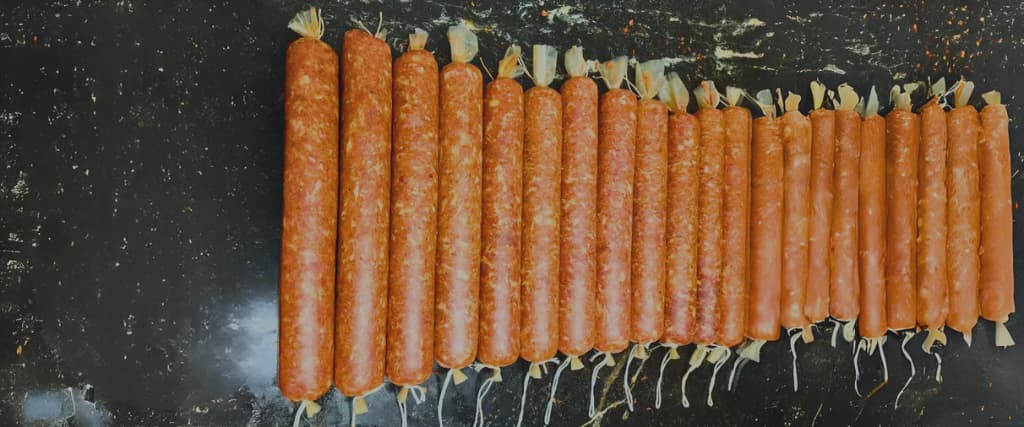
Salami is a very tasty, cured sausage which takes the form a fermented and air-dried meat. Traditionally pork, it has been popular across Europe, and in particular the southern, eastern and central parts of the continent for many years.What is Salami?Salami is a very tasty, cured sausage which takes the form a fermented and air-dried meat. Traditionally pork, it has been popular across Europe, and in particular the southern, eastern and central parts of the continent for many years.
Historically in the 19th and 20th centuries it was very popular with less affluent people. On account of it being a cost effective food that could be stored for up to 6 weeks at room temperature once it was cut.
Often incorporated within a modern day charcuterie board along with olives, cheese, other meat and sundried tomatoes, salami is also a very popular sandwich filling too.
Ingredients to make salami
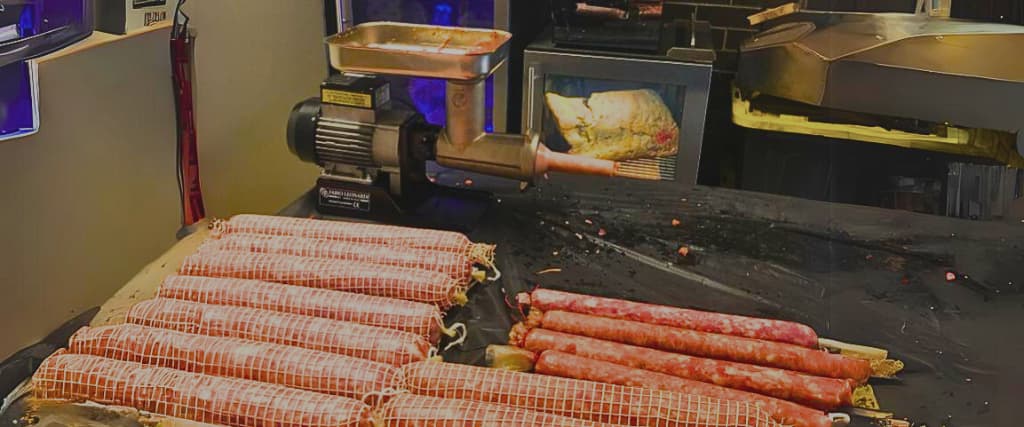
There are many different types of salami but in this recipe we use pork and beef. As well as a number of other ingredients as outlined below.
Meat:
350g lean pork
350g lean beef
300g pork backfat
Spices:
22.5g salt
2.5g Cure
3g dextrose
2g black pepper
2g paprika
Equipment
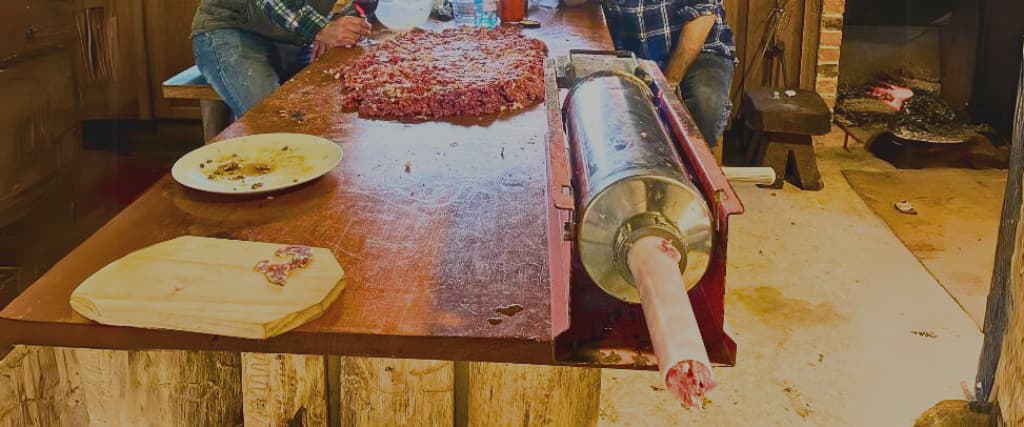
To make homemade salami you will need the following equipment:
Meat Grinder
To grind the meat properly you will need a meat grinder. By chopping the pork and beef into small chunks you will be able to properly mix the meat together.
Sausage stuffer
The best way to get the meat into the casing is via a sausage stuffer. To kickstart this process you could also use a funnel, modified plastic bottle, or even a filler.
Sausage casings
For your sausage casings it is best to use a 28/30 calibre pork casing, or if you can source them larger natural intestines.
The latter have terrific properties that render them perfect for salami. They don’t peel at all during maturation, can also be smoked and are impervious to fat.
Sausage picker or sewing needle
This will be useful to prick any holes created by air getting into the sausage during the filling process.
Step-by-step Method
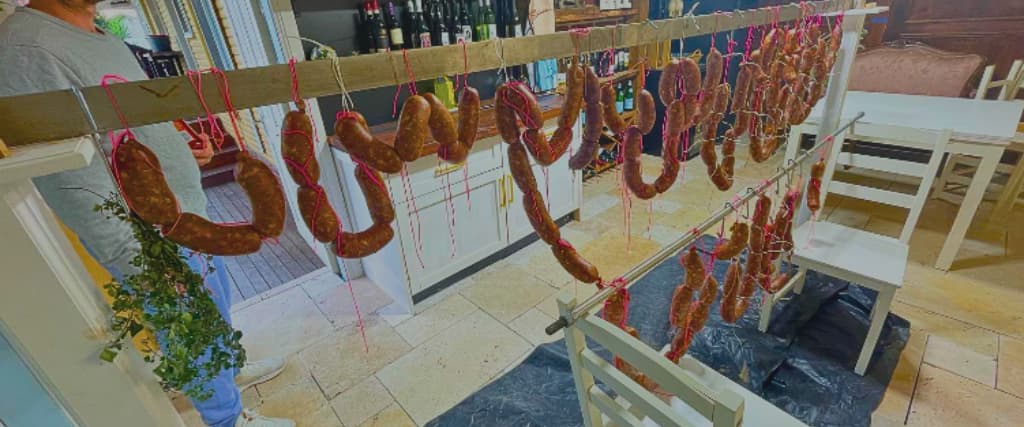
To make homemade salami please follow these step-by-step instructions.
- Cut all of the beef and pork meat into cubes, stripes or chunks. The size can vary depending on the configuration of your meat grinder.
2. Place the meat in the freezer for between 1 to 2 hours. This will assist you with the grinding process and also ensure the meat mixture doesn’t get too warm whilst you do it.
3. Grind the meat using a medium sized perforated disc (usually about 4.5 mm). Try to grind the meat to a coarse consistency, and for best results ensure the meat remains cold.
4. Combine the salt, spices and cure to the meat, gently massage the meat for 2-3 minutes to ensure they all mix evenly.
5. Knead the meat either vigorously by hand or with a food processor that has a kneading attachment. This is an important step as it not only binds the sausage meat well, but also ensure the sausage will not crumble at a later stage.
6. Gently ease the casings onto your sausage stuffer and fill them with the meat mix. Try to ensure there is no air trapped inside them.
7. Tie off the ends of the casing with a butchers twine.
8. If there are any signs of air holes use a needle to prick them.
9. Let the fermentation process begin. The best way to do this is to hang the salami up at room temperature for 24 hours. If you can, try to ensure the temperature is around 68 °F and the humidity is around 95%. To keep the humidity as high as possible, spray the salami with water on a regular basis.
11. During the next 24 hours you will begin to see the colour start to change. When this happens you can hang it up in any cool place. At this point do not expose the salami to humidity of less than 75% or a temperature above 18 C°.
If you have a cellar this is a perfect spot. For the first couple of days hang a damp cloth near the salami and/or moisten them every now and then. Leave them there for a period of at least 3 weeks.
12. Your Salami should now be ready to eat! But if you would prefer it get even harder feel free to dry it for longer.
A note about meat
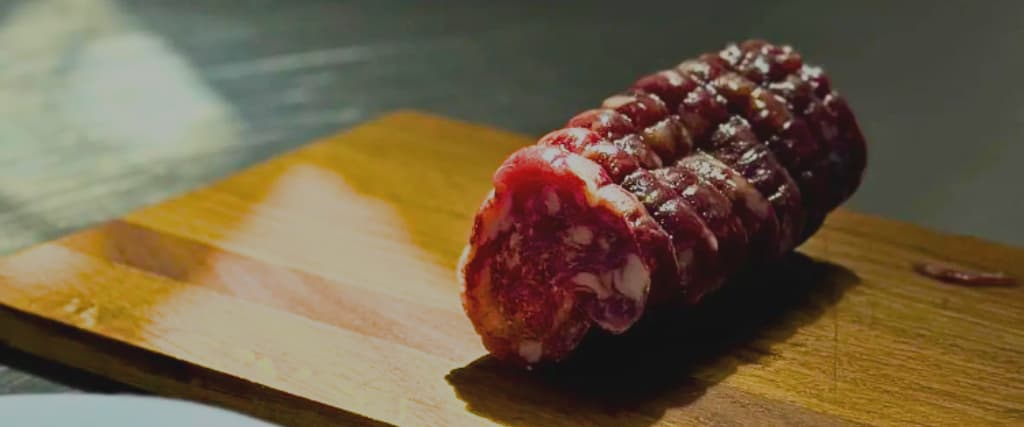
When making homemade salami, we believe the best and tastiest results are achieved with meat that comes from heavier animals that are at least a year old.
This is because meat which comes from pigs that have been fast-fattened, tends to contain a very high water content. Which in turn can negatively impact the maturation process.
Likewise with the fat, which really should be as solid as possible.
Final Thought

If you follow our step-by-step instructions carefully you should soon find yourself with perfect, delicious meat which you can keep at room temperature for up to 6 weeks.
So there you have it. Our first timers guide to making homemade salami!
We very much hope you enjoy making, and more importantly, eating it!
